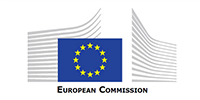
Today the Commission adopted a new Aviation Strategy, a milestone initiative to boost Europe's economy, strengthen its industrial base and contribute to the EU global leadership.
Today the European Commission adopted a new Aviation Strategy for Europe, a milestone initiative to boost Europe's economy, strengthen its industrial base and reinforce its global leadership position. These are three core priorities of President Jean-Claude Juncker, on which the Strategy will deliver, by ensuring that the European aviation sector remains competitive and reaps the benefits of a fast-changing and developing global economy. A strong and outward-looking aviation sector will not only benefit businesses, but also European citizens by offering more connections to the rest of the world at lower prices.
Vice-President for the Energy-Union Maroš Šefčovič said, "Competitive and efficient aviation is central to Europe's growth. This new Aviation Strategy creates a framework that will enable European aviation to maintain its global leadership. It also confirms the pioneering commitment of Europe to sustainable aviation, a highly topical issue as the world has its eyes on Paris for the COP21".
EU Commissioner for Transport Violeta Bulc added, "European aviation is facing a number of challenges and today's Strategy sets out a comprehensive and ambitious action-plan to keep the sector ahead of the curve. It will keep European companies competitive, through new investment and business opportunities, allowing them to grow in a sustainable manner. European citizens will also benefit from more choice, cheaper prices and the highest levels of safety and security."
The Commission's goal is to shape a comprehensive strategy for the whole EU aviation ecosystem. In this context, the priorities are to:
1. Place the EU as a leading player in international aviation, whilst guaranteeing a level playing field. The EU aviation sector must be allowed to tap into the new growth markets. This can be achieved through new external aviation agreements with key countries and regions in the world. This will not only improve market access, but also provide new business opportunities for European companies and ensure fair and transparent market conditions based on a clear regulatory framework. These agreements will also provide more connections and better prices for passengers. Global connectivity is a driver of trade and tourism, and directly contributes to economic growth and job creation.
2. Tackle limits to growth in the air and on the ground. The main challenge for the growth of EU aviation is to address the capacity, efficiency and connectivity constraints. The fragmentation of the European airspace costs at least €5 billion a year and up to 50 million tonnes of CO2. Capacity constraints at EU airports could cost up to 818,000 jobs by 2035. Now is therefore the time for the EU to plan for future air travel demand and avoid congestion. For this reason, the Strategy stresses the importance of completing the Single European Sky project, optimising the use of our busiest airports, and monitoring intra-EU and extra-EU connectivity to identify shortcomings.
3. Maintain high EU standards. In the interest of European citizens and businesses, it is crucial to maintain high EU standards for safety, security, the environment, social issues and passenger rights. The Strategy proposes important measures in this sense, with an update of the EU's safety rules in order to maintain high safety standards alongside growing air traffic. Furthermore an effective and efficient regulatory framework will give the industry more flexibility to thrive and remain competitive globally. The Commission will also seek ways to reduce the burden of security checks and costs, through the use of new technology and a risk-based approach. It will further reinforce the social dialogue and employment conditions in aviation, and pursue a robust global measure to achieve carbon neutral growth from 2020.
4. Make progress on innovation, digital technologies and investments. A catalyst for the development of aviation, and its function as an enabler of growth, will be innovation and digitalisation. Europe must in particular unleash the full potential of drones. That is why the Strategy proposes a legal framework to ensure safety and legal certainty for industry and addresses concerns related to privacy and data protection, security and the environment. In addition, appropriate investments into technology and innovation will secure Europe’s leading role in international aviation. The European Union has planned to invest €430 million each year, until 2020, in the Single European Sky ATM Research (SESAR) project. The timely deployment of SESAR solutions can potentially result in the creation of over 300 000 new jobs. The deployment and optimisation of information and communications technologies are also particularly relevant for airport capacity, performance and quality of service.
About European Commission
The European Commission is the EU's executive body. It represents the interests of the European Union as a whole (not the interests of individual countries).
The term 'Commission' refers to both the College of Commissioners and to the institution itself.
The Commission's main roles are to:
- propose legislation which is then adopted by the co-legislators, the European Parliament and the Council of Ministers
- enforce European law (where necessary with the help of the Court of Justice of the EU)
- set a objectives and priorities for action, outlined yearly in the Commission Work Programme and work towards delivering them
- manage and implement EU policies and the budget
- represent the Union outside Europe (negotiating trade agreements between the EU and other countries, for example.).
The European Commission has its headquarters in Brussels, Belgium, and some services also in Luxembourg. The Commission has Representations in all EU Member States and 139 Delegations across the globe.




Comments
There are no comments yet for this item
Join the discussion